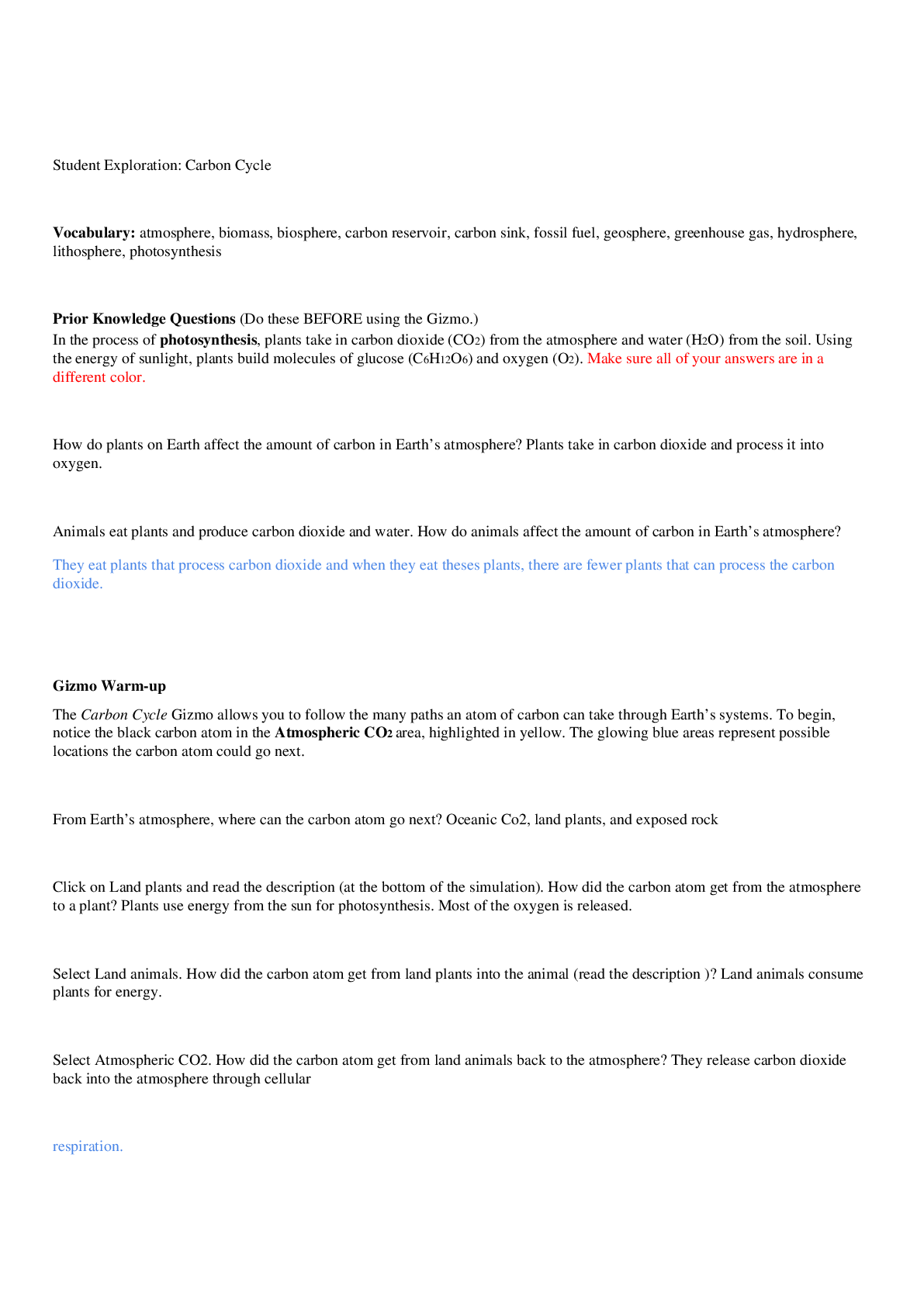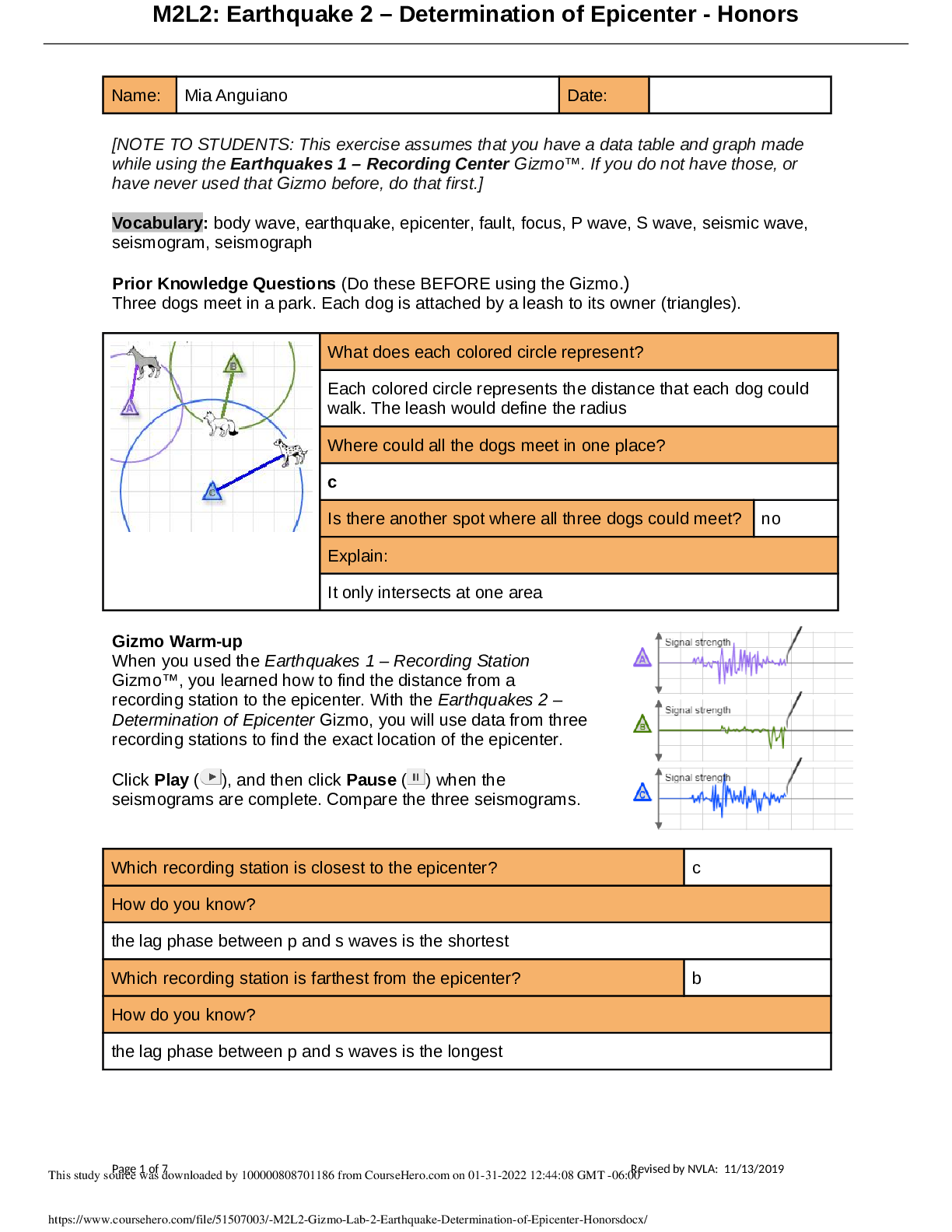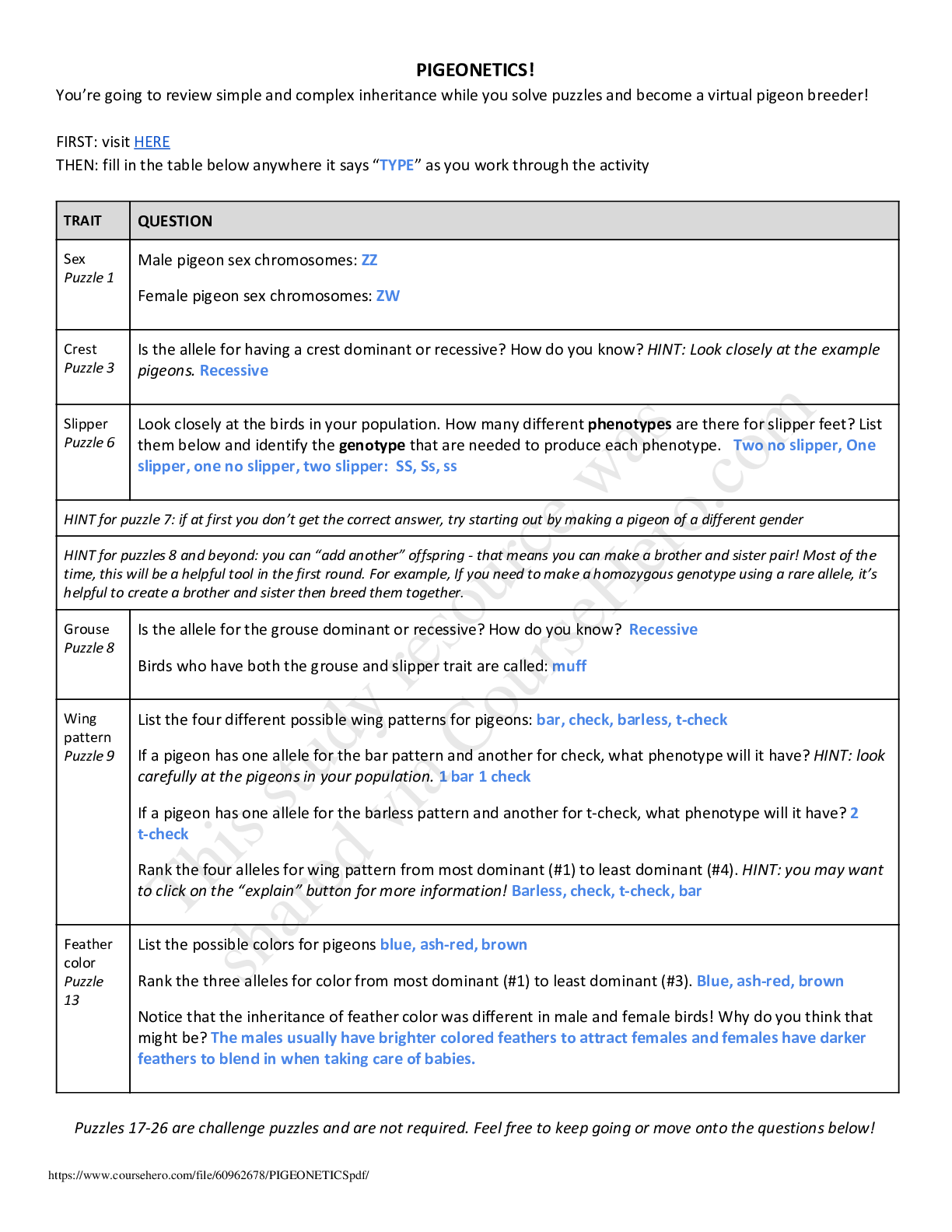Intermolecular ForcesSE_Key
Document Content and Description Below
2019 Name: Date: Student Exploration: Polarity and Intermolecular Forces Vocabulary: dipole, dipole-dipole force, dipole-induced dipole force, electronegativity, intermolecular force, ionic bond, Lond... on dispersion force, molecule, nonpolar, nonpolar covalent bond, partial charges, polar, polar covalent bond, valence electron Prior Knowledge Questions (Do these BEFORE using the Gizmo.) 1. A big bully is having a tug-of-war with a small child. There is a ball attached to the middle of the rope. Toward whom will the ball move? 2. Two equally strong kids are having a tug-of-war. What do you expect to happen to the ball in this situation? Gizmo Warm-up Just like in a tug-of-war, atoms that are bonded to one another pull on the electrons they share. In the Polarity and Intermolecular Forces Gizmo, you will explore how these opposing forces relate to bond types and the forces between molecules. To begin, drag the Na (sodium) and Cl (chlorine) atoms into the simulation area. Turn on Show valence electrons. A valence electron is found in the outermost energy level of the atom. 1. Click Play ( ). What do you notice? 2. Which atom seems to be pulling more on the sodium’s one valence electron? How do you know? 3. What happens to the colors of the simulated atoms, and what does this indicate? https://www.coursehero.com/file/54868211/Dennis-Chaisson-Gizmo-IntermolecularForcespdf/ This study resource was shared via CourseHero.com2019 Activity A: Bond polarity Get the Gizmo ready: On the BOND POLARITY tab, click Reset ( ). Drag the atoms out of the simulation area. Introduction: A neutral atom has the same number of protons as electrons. Atoms that gain electrons become negatively charged, while those that lose electrons become positive. A polar bond forms when shared electrons are pulled closer to one atom than another, causing the bonded atoms to become partially charged. In a nonpolar bond, electrons are shared equally. Question: What causes bonds to be polar or nonpolar? 1. Observe: Select the Show polar molecule inset checkbox. The animation shows the probable location of electrons (orange dots) in a polar molecule. A. What do you notice about the distribution of the electrons? B. How does this electron distribution affect the charges of the bonded atoms? 2. Observe: Turn on the Show nonpolar molecule inset. A. How are the electrons in this molecule distributed? B. Why do the bonded atoms remain neutral? 3. Experiment: Turn off Show polar molecule inset and Show nonpolar molecule inset. Check that Show valence electrons is turned on. Drag the Na and Cl atoms into the simulation area. Click Play. Note the colors. Red indicates a negative charge, while blue indicates a positive charge. A. Does a polar or nonpolar bond form? B. Try several other metal/nonmetal combinations. What do you notice about the bonds that form? Ionic bonds are polar bonds that form between metal and nonmetal atoms. In this bond, valence electrons are transferred from a metal to a nonmetal. Drag each of these metal/nonmetal combinations into the Ionic bond bin on the upper right. (Activity A continued on next page) https://www.coursehero.com/file/54868211/Dennis-Chaisson-Gizmo-IntermolecularForcespdf/ This study resource was shared via CourseHero.com2019 Activity A (continued from previous page) 4. Experiment: Now try forming bonds between different combinations of nonmetals. A. What do you notice? B. Are all of these bonds polar? Explain. C. Which nonmetal appears to attract electrons the most? 5. Experiment: Turn on Show electronegativity. Electronegativity (EN) describes how strongly an atom attracts a pair of shared electrons. The higher the EN value, the greater the tendency of an atom to hold onto electrons in a bond and become negatively charged. Electronegativity difference is found by subtracting the EN value of one atom from another. Choose two nonmetals with a small (or no) EN difference between them. Click Play. What happens to the shared electrons in this bond? When the shared electrons experience the same attraction from each atom, the result is a nonpolar covalent bond. Drag the bonded atoms to the Nonpolar covalent bond bin. 6. Experiment: Choose two nonmetals with a large electronegativity difference. Click Play. What happens to the valence electrons in this bond? A bond in which the electrons are shared unequally is a polar covalent bond. Notice the small δ+ and δ– symbols, which indicate partial charges. Drag the resulting combination to the Polar covalent bond bin. 7. Classify: Use the Gizmo to categorize the remaining element combinations as forming either ionic, polar covalent, or nonpolar covalent bonds. List your results below. Ionic (EN difference > 1.67) Polar covalent (EN diff. < 1.67 and > 0.40) Nonpolar covalent (EN difference < 0.40) https://www.coursehero.com/file/54868211/Dennis-Chaisson-Gizmo-IntermolecularForcespdf/ This study resource was shared via CourseHero.com2019 Activity B: Molecular polarity Get the Gizmo ready: Select the MOLECULAR POLARITY tab. Introduction: Ionic bonds, like those found in NaCl, form crystalline solids. Covalent bonds, on the other hand, usually form discrete molecules. A polar molecule, while neutral overall, has a slight positive charge on one end and a slight negative charge on the other. Question: What determines the polarity of molecules? 1. Observe: Notice that the molecules containing polar covalent bonds are grouped together at lower left, and the molecules containing nonpolar covalent bonds are at lower right. Drag the H2O molecule into the simulation area. A. Are the individual bonds in this molecule polar or nonpolar? B. Click Turn on electric field. What do you notice? C. The electric field consists of a positively charged plate on one side and a negatively charged plate on the opposite side. Which side of the H2O molecule is attracted to the positive plate, and why do you think this attraction occurs? D. Click Reverse field. Why does the H2O molecule rotate 180°? [Show More]
Last updated: 2 years ago
Preview 1 out of 8 pages

Buy this document to get the full access instantly
Instant Download Access after purchase
Buy NowInstant download
We Accept:

Reviews( 0 )
$7.00
Can't find what you want? Try our AI powered Search
Document information
Connected school, study & course
About the document
Uploaded On
Jul 19, 2021
Number of pages
8
Written in
Additional information
This document has been written for:
Uploaded
Jul 19, 2021
Downloads
0
Views
84




.png)
.png)




.png)




